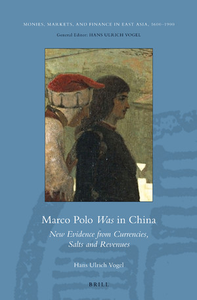Publications
Marco Polo Was in China
New Evidence from Currencies, Salts and Revenues

Abstract: In Marco Polo was in China Hans Ulrich Vogel undertakes a thorough study of Yuan currencies, salts and revenues, by comparing Marco Polo manuscripts with Chinese sources and thus offering new evidence for the Venetian’s stay in Khubilai Khan’s empire.
Types of Fuel used in the Salt Works of Sichuan and Yunnan in South-western China
A Historical Overview
Abstract: This article concentrates on the regions of well salt production in Yunnan andSichuan in south-western China. In both provinces, salt was produced by the exploitationof underground brine resources, some of which surfaced in the form ofsprings, while others had to be tapped with the help of shaft wells and, in Sichuanfrom the mid-eleventh century onwards, by deep-drilling. In Sichuan, first organicfuel was used, such as wood, rushes or straw. From the sixteenth century onwards,or perhaps even much earlier, Sichuan salt producers also started to use coal. Sichuanis not only the region where deep-drilling for salt was invented, but is also where wehave the first evidence world-wide of the use of natural gas for boiling brine. In theperiod between the first record of natural gas utilisation in the third century and amore systematic use of this resource in the sixteenth century, natural gas was,however, dangerous for the hoisting of well brine, because it caused explosions andpoisoned those lowered down into the well. The use of coal and natural gas no doubthelped in alleviating fuel supply problems for the Sichuan salt works. In contrast toSichuan, Yunnan salt wells and maritime salines persisted in using organic fuel,though for the latter the alternative of solar evaporation methods offered some wayout of the bottlenecks that beset the provision of organic fuel.